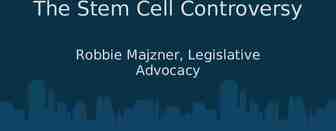How Business Intelligence Software Works and a Brief Overview
24 Slides288.50 KB

How Business Intelligence Software Works and a Brief Overview of Leading Products Jai Windsor MIS 5973 December 8, 2005

What is Business Intelligence (BI)? Yet another IT buzzword? “Software that enables users to obtain enterprise-wide information more easily” A strategy to ensure the right information is available to the right decision makers at the right time Working definition- products that are designed to extract and present data from a data warehouse (ideally)

Extract and present data Querying capabilities Reporting capabilities Analysis – – – Using reports Using Excel Using OLAP Ideally from a data warehouse, but can be from other databases, spreadsheets, flat files, etc.

BI Vendors Business Objects Cognos Actuate Applix Information Builders Informatica MicroStrategy Microsoft Oracle SAS

Querying CapabilitiesThe Business View “Business view”, or metadata layer Safe, user friendly environment for business users Generates SQL queries for the user IT users can modify or write their own queries “Universe”, “Package”, “Project”

Querying CapabilitiesPrompting the User Helps users design their own queries Asks users what data they want to see and how they want to filter it Standard report templates with hundreds of variations Do’s Don’ts

Querying CapabilitiesComplex Business Questions Might seem innocent enough but cause a huge problem for the BI Limited SQL functionality in some cases- subqueries, multipass SQL, new functions like RANK Proprietary methods are sometimes slow and inefficient

Reporting Capability Reporting transforms query results from raw data to meaningful information Report design Charting

Interactive Reporting as an Analysis Tool The least complicated method of data analysis Investigate trends or exceptions OLAP-lite Formulas and functions

Report Delivery – Push Strategy Report generation scheduled by IT “Pushed” to users Bursting Users can be overwhelmed and stop reading reports Alerts

Report Delivery- Pull Strategy Users log on and request (“pull”) reports Can create a burden on server Schedule-and-pull recurring, heavily used, complex reports Web portals and interactivity

Analysis by Excel Excel remains the most popular BI tool in use Familiar “Massage” data Bursting Cheap!

OLAP Online Analytical Processing MOLAP – Multidimensional OLAP Multidimensional data cubes Multidimensional and crossdimensional calculations Response times are fast and predictable

Other variations ROLAP – relational structure HOLAP – hybrid between MOLAP and ROLAP DOLAP – dynamic OLAP, “personal” temporary cubes

More on OLAP Drill down, drill across Drill to detail Reporting integration

Cognos Enterprise BI Series 7 Query Studio and Report Studio tools Web-based Automatic data ranking No problem with date dimension Good user-defined report scheduling

Actuate Actuate 8 Analytics Cube Designer Cross-join data from heterogeneous sources eSpreadsheet analysis tool No problem splitting data fields Good user-defined report scheduling

Information Builders WebFocus 7 No OLAP architecture, no cubes Must learn native scripting language “Accordion reports”

Applix TM1 Newcomer to market Seamless integration between OLAP and reporting Displays data in Excel Must supply own SQL to build cubes

MicroStrategy 8 Heavily dependent on proper data warehouse design. Must have star schemas to properly create cubes Must use lookup tables to create the date dimension Not tolerant of dirty data Integrates directly with Microsoft Office Better for data warehousing and data mining than reporting and OLAP analysis

Microsoft SQL Server 2000 Reporting Services and Analysis Services Analysis services supports MOLAP, ROLAP, and HOLAP Easy to configure and define cubes One fact table per cube Reporting Services is an extension to Visual Studio.NET 2003 and best left to developers Surprisingly poor integration with Excel!

Business Objects Enterprise 6.1 Unique DOLAP architecture Flexibility and low IT maintenance

Conclusion Frees IT staff from being report writes Business power users may know better what they want to know than IT can Business users can explore data in new ways Pure players vs platform vendors

Any questions?






